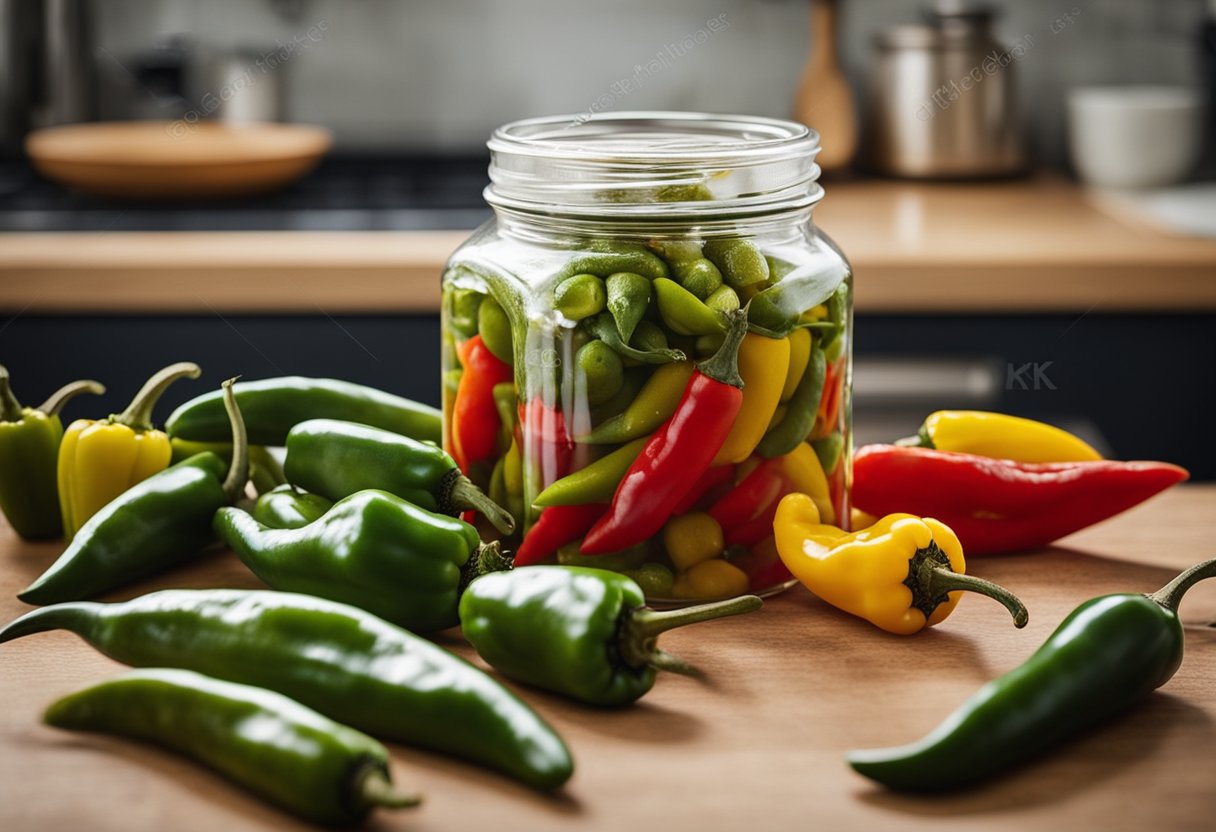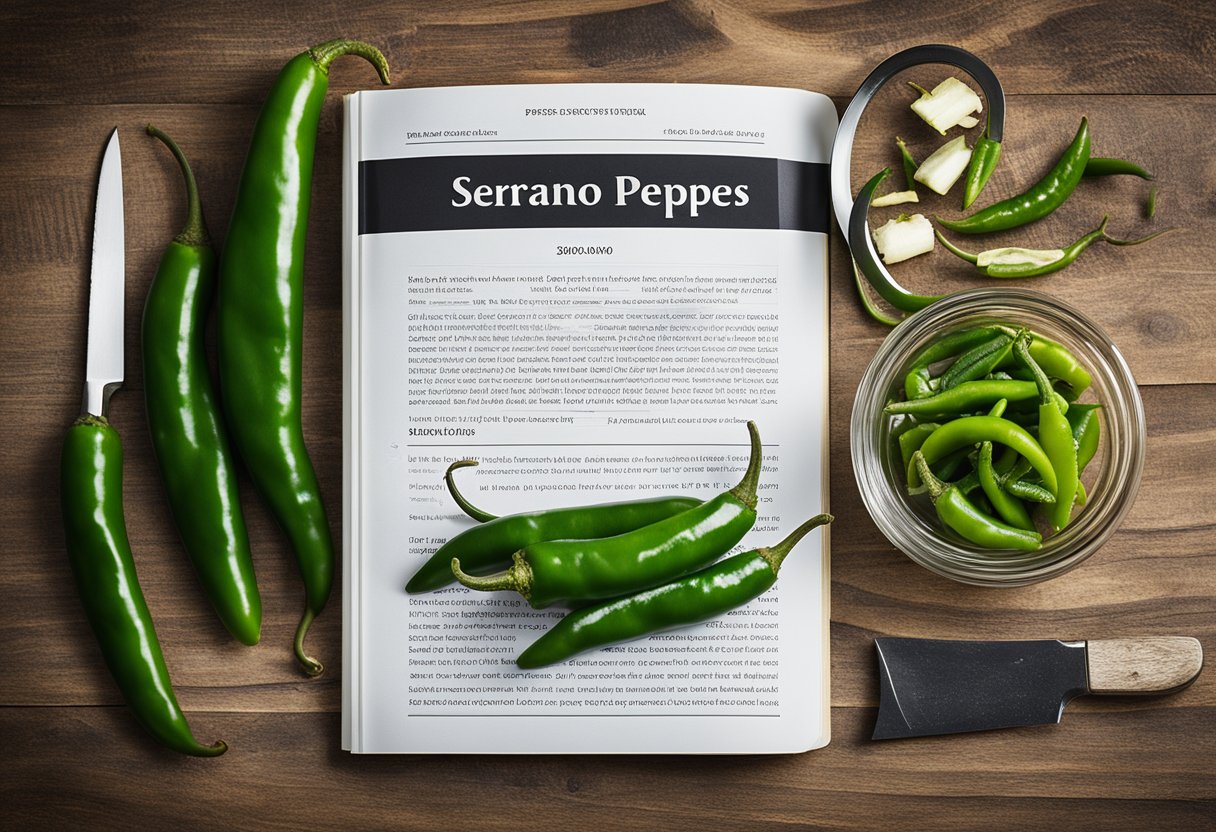Serrano peppers are a versatile ingredient that can add both heat and flavor to numerous dishes. If you find yourself with an abundance of these fiery chili peppers, there’s no need to let them go to waste. They offer a moderate to hot level of spiciness, measuring between 10,000 and 23,000 Scoville heat units, which means they’re more potent than the common jalapeño. Whether you’re a fan of spicy cuisine or simply looking to incorporate a little kick into your meals, serranos provide a distinctive taste that can enhance your cooking.

With their vibrant green color and crisp texture, serrano peppers can be used fresh, pickled, or cooked. You can dice them into salsas for a fresh, zesty flavor or slice them into rings and add them to pizzas, sandwiches, and salads for an extra burst of heat. If you prefer to mellow out their spiciness, roasting or sautéing the peppers can bring out a sweeter, more subdued flavor. This makes serranos an excellent choice for stirring into sauces and stews, where they contribute depth without overwhelming the other ingredients.
In addition to these immediate uses, serrano peppers can also be preserved for longer periods. Pickling is a popular method for extending their shelf life, while also imparting a tangy flavor. Freezing serrano peppers is a straightforward way to ensure you have a supply of heat on hand for future recipes. When preserving serranos, make sure to handle them with care and consider wearing gloves, as their oils can irritate the skin. Whether incorporated into recipes immediately or preserved for later, these chili peppers offer a bounty of options for spice enthusiasts and culinary adventurers alike.
Culinary Uses of Serrano Peppers

Serrano peppers bring a vibrant heat and depth of flavor to a variety of dishes. Their versatility in recipes ranging from traditional Mexican cuisine to modern fusion allows you to enhance your food with their bold taste.
Salsa and Sauces
- Salsa: Blend serrano peppers into salsas for a fiery kick. You can use them whole, seeds included, for extra heat, or deseed them for a milder taste.
- Recipe: For a quick salsa, combine diced tomatoes, minced serrano peppers, onions, cilantro, and a squeeze of lime juice.
- Sauces: Serrano peppers add complexity to sauces. They can be pureed into creamy sauces or minced for a textured condiment.
- Recipe: Try making a serrano cream sauce by blending roasted serrano peppers with sour cream, garlic, and lime zest for a creamy topping ideal for tacos or grilled meats.
Main Dishes and Sides
- Main Dishes: Incorporate chopped serrano peppers into main dishes like shrimp pad thai for a customizable heat level or add them to burgers for an unexpected flavor twist.
- Recipe: When preparing shrimp pad thai, sauté the peppers with the shrimp and vegetables before mixing with tamarind sauce and noodles.
- Recipe: Mix minced serrano peppers into your burger patties before cooking for a spicy burst in every bite.
- Sides: Use serrano peppers to spice up side dishes. They can be added to rice, beans, or vegetable preparations, giving an ordinary dish a zesty lift.
- Recipe: For a simple yet flavorful side, dice serrano peppers and fold them into a corn salad with red onions, cilantro, and a honey-lime dressing.
Preservation Techniques for Serrano Peppers

When you have an abundance of serrano peppers, preservation is key to ensuring that their flavor and texture are maintained for future use. Here are some effective methods to preserve them.
Pickling Serrano Peppers
Pickling is a method that not only preserves the peppers but also adds a unique tangy flavor to them. To pickle serrano peppers, you’ll need vinegar, water, salt, and optional flavorings like garlic or herbs.
- Ingredients:
- Serrano peppers
- Vinegar (such as white or apple cider)
- Water
- Salt
- Optional: garlic, herbs, and spices
- Steps:
- Wash your peppers thoroughly.
- Slice the peppers into rings, leaving the seeds in for added heat.
- Boil equal parts vinegar and water, adding salt to taste. You can include your herbs and spices at this stage.
- Place the sliced peppers into a sterilized can or jar.
- Pour the boiling mixture over the peppers, ensuring they are completely submerged.
- Seal the jar and let it cool before storing it in the refrigerator.
Pickled peppers are excellent on pizzas, sandwiches, or as a part of an appetizer platter.
Freezing Serrano Peppers
Freezing serrano peppers is a straightforward way to preserve their texture and flavor with minimal preparation.
- Instructions:
- Begin by washing and drying your peppers.
- Cut off the stems, and if you prefer milder peppers, remove the seeds.
- You can leave the peppers whole, or chop them into pieces.
- Place the peppers on a baking sheet lined with parchment paper, ensuring they are not touching.
- Freeze the peppers on the baking sheet for about an hour, then transfer them into a freezer bag or an airtight container.
- Label the container with the date, and return it to the freezer.
Frozen serrano peppers can be used directly from the freezer in cooked dishes like stir-fries, soups, and stews.
Innovative Serrano Pepper Preparations

When excess serrano peppers grace your kitchen, exploring innovative preparations can transform them into culinary highlights. These fiery chilies offer a fresh, smoky flavor that elevates dishes from the usual to the extraordinary.
Serrano-Infused Oils and Condiments
- Serrano-Infused Oil: Heat a cup of olive oil with two diced serrano peppers. Simmer until the peppers are soft and the oil is fragrant. Strain and use for a smoky kick in dressings or as a dipping oil.
- Bold Serrano Hot Sauce: Blend raw serrano peppers with vinegar, salt, a touch of garlic, and a spoonful of sugar to balance the heat. Perfect for dabbing onto your favorite foods.
- Sweet Serrano Relish: Combine chopped serrano peppers with onions, tomatoes, a hint of sugar, and vinegar. Serve as a lively companion to grilled meats or fish.
Garnishes and Flavor Boosters
- Serrano Pepper Avocado Toast: Top your avocado toast with thin slices of raw serrano peppers for an instant upgrade in flavor intensity.
- Guacamole Twist: Dice roasted serrano peppers and fold them into your guacamole. Their warmth pairs well with the cool richness of avocados.
- Cocktail Edge: Garnish your cocktail glass with a small serrano ring to infuse a subtle, spicy note into your sip.
- Roasted Serrano Garnishes: Thinly slice serrano peppers and roast until crispy. Use as a bold, smoky garnish on soups, salads, or tacos.
Through these varied preparations, your serrano peppers will transition from mere surplus to a standout feature of your cooking repertoire.
Understanding Serrano Pepper Heat

When handling serrano peppers, it’s vital to comprehend the level of heat they can bring to your dishes. The heat of chili peppers, including serranos, is measured by the Scoville Heat Unit (SHU) scale. Your serrano pepper typically ranges from 10,000 to 23,000 on this scale.
Serranos contain a compound called capsaicin, which triggers the heat sensation. The more capsaicin, the hotter the pepper. When comparing serrano to other peppers, like the jalapeno pepper, serranos are hotter. Jalapenos fall between 2,500 to 8,000 SHU. In contrast, a habanero is much hotter, with a range of 100,000 to 350,000 SHU.
Here’s a brief comparison table:
| Pepper | Scoville Heat Unit (SHU) |
|---|---|
| Jalapeno | 2,500 – 8,000 |
| Serrano | 10,000 – 23,000 |
| Habanero | 100,000 – 350,000 |
If you’re looking to roast serrano peppers, this will alter the heat perception. Roasting can mellow the pepper’s heat slightly and brings out a bit of sweetness, adding a complex flavor profile to your dishes. Remember to wear gloves and use caution when roasting or handling serranos, as the oils containing capsaicin can irritate your skin and eyes.
Frequently Asked Questions

If you have excess Serrano peppers, learning to preserve and incorporate them into dishes is a practical skill. This section answers common questions on how to can, pickle, use in recipes, and even create hot sauces with Serrano peppers.
How can I preserve Serrano peppers through canning?
To preserve Serrano peppers by canning, you’ll need to sterilize your jars and prepare a vinegar-based brine. Fill the jars with peppers, pour the boiling brine over them, seal the jars, and process them in a boiling water canner for about 10 to 15 minutes.
What are some quick pickling recipes for Serrano peppers?
For quick pickling Serrano peppers, slice the peppers and pack them into a jar. Then, pour a hot mixture of vinegar, water, salt, and sugar over them. Add garlic, dill, or other spices for flavor. Let them cool to room temperature before sealing and refrigerating.
Can you provide ideas for incorporating Serrano peppers into chicken dishes?
Serrano peppers add heat and flavor to chicken dishes. Dice them and include them in marinades for grilling chicken or slice them into thin strips to toss in with stir-fries or fajitas. You can also stuff chicken breasts with a mixture containing Serrano peppers for a spicy kick.
What are unique ways to stuff Serrano peppers?
Try stuffing Serrano peppers with cream cheese mixed with chopped herbs and garlic for a creamy contrast to their heat. Or, fill them with a mix of cooked ground meat, spices, and cheese before baking for a hearty appetizer or snack.
How do I make hot sauce from Serrano peppers?
To make hot sauce, blend Serrano peppers with garlic, onion, salt, and vinegar until smooth. Simmer the mixture for a few minutes, then strain it for a smoother texture or leave it as is for a more rustic hot sauce. Bottle and refrigerate once cool.
What are some appetizer recipes that use Serrano peppers?
Create appealing appetizers by incorporating Serrano peppers into recipes like mini nacho bites, stuffed pepper poppers, or vibrant salsas. You can also slice them thin and add them to bruschetta or skewers for a touch of heat.
